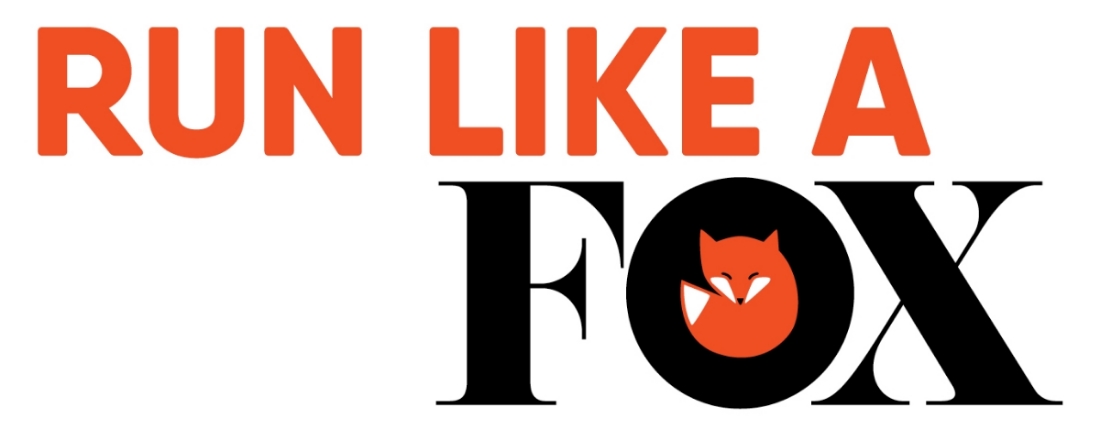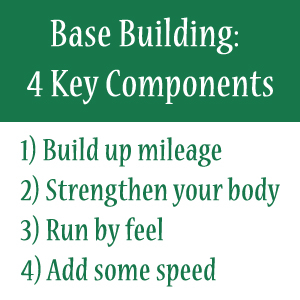Marathon Essentials - Building a Base
/This past week it was 76 degrees. At 5:20am. As I started off on what was sure to be a “slog” through the planned ten miles, I searched my mind for reassurance that there was a good reason for me to be logging so many miles in these weeks before my official training plan really begins. It’s summer time, and for those of us planning on racing a fall marathon, that means it’s prime time to be finishing up our work on building a solid base. I am utilizing a 12-week marathon training schedule this season to prepare for Harrisburg, PA on November 9th. Which means that for me, official “training” doesn’t start until well into August. But in these spring and summer months of May, June, and July, I’m building a solid foundation in hopes that in August, I’ll be able to capitalize on that base and have a strong training season. But I got to thinking: What exactly is the definition of a “base” for marathoners – and what’s the best way to build a great one?
What is a Base?
Legendary New Zealand coach Arthur Lydiard took the running world by storm in the 1960s with his creation of the base. In the illustration below of Lydiard’s training pyramid, the base is the 3-6 months of aerobic conditioning – a time of slowly building up mileage and providing the necessary stimulus to increase your aerobic system’s capacity. A good base period strengthens your skeletal system, muscles and connective tissues to prepare you for the harder training to follow. Without putting in the time to develop a solid base, you risk injury when you begin to ramp up the intensity later in the season. Having a solid base also allows you to recover slightly faster when the real work begins. And since recovery is such a huge component of successful training, that’s key.
How to Build Your Base:
While Lydiard’s boys were famous for logging 100-mile weeks, most marathoners don’t need to be putting in quite so much mileage in the base phase. What IS important, however, is to slowly build up a good base of mileage that considers your age, ability, gender, fitness, and event.
Build Up Mileage
The mileage you run during your base varies for each runner. If you’ve only ever maxed out at a 40-mile peak, now’s not the time to jump to an 80-mile week. But base building is the time to gradually ramp up the mileage and get your body used to the mileage you are going to ask of it when you start your training block. You can try adding a few more miles than you did in your last base phase, so that each year you may progressively end up with a higher “peak” – building each season on the previous one. Your long runs on the weekend should gradually increase as well, but there’s no need to be running 18 or 20 milers just yet.
Strengthen Your Body
The base is a great time to incorporate some strength training into your routine. If your schedule allows, a good strength and core session 2x a week can make a huge difference. Your cardiovascular system tends to improve rather quickly – but your musculoskeletal system can take a bit of time to catch up. Some supplemental strength training during your base phase can go a long way towards helping your body handle the subsequent higher mileage weeks without injury. If you belong to a gym, a strength/conditioning class or a circuit in the weight room is a good place to start. No gym? Not a problem. There are tons of bodyweight-only exercises you can do to develop your overall strength and core. Jay Johnson has one (along with videos) here: http://www.runnersworld.com/race-training/video-general-strength-exercises
Run By Feel
The base building phase is a great time to practice listening closely to your body and your “inner coach”. While it’s tempting to sport your Garmin for every run and keep a close eye on the mileage and pace, running by feel is an essential skill for all runners to develop. You need to learn to listen to your body and feel the difference between a medium-hard effort and a full-out effort. You’ll need that skill late in your races as you work to squeeze every last drop of energy out of your body and run strong to the end. Fail to listen to your body and you risk pushing too hard too early and running out of gas before the finish line. To practice in your base period, leave your Garmin at home and try to start slowly on each run – allowing your body to gradually warm up and ease into the pace – and aim to end each run on a strong note (but not an all-out sprint!).
Add Some Speed
One of the slight clarifications/modifications to Lydiard’s idea of the base is the incorporation of some faster running. Coaches such as former Olympic marathoner Jenny Spangler recommend some light speed work (such as fartleks and strides) once or twice a week during the base. Other coaches recommend slightly longer work (such as a tempo run) to help ease the runner into the mental and physical demands of the training ahead. From what I’ve read, this seems to be a great time for runners to choose the workout they want to do – since fartleks, strides, and tempos all seem to provide similar benefits. If a tempo run on a Tuesday morning sounds more appealing to you than 10x2 minute fartleks, well, have at it!
What this means for me:
So after looking at all of the great base-building info that is out there, here’s my personal plan. This next training cycle I’m hoping to hit a peak of around 90, so I’m gradually working my way up over these next weeks. Right now I’m hovering around 55-60 miles per week, with one or two days of faster “speedwork-lite”. I tend to like fartleks better than tempos, but I’ve been making myself do 20-minutes of tempo a week just to try and overcome my aversion to them. I’ve also been incorporating some strides during the last half of one of my runs. For strength and core work I’ve been heading twice a week to the YMCA to do a Body Pump class (group strength training) and a core class. As for running by feel, I need to get better about leaving the Garmin at home, and that’s something I’m working on.
Final Thoughts
Getting that aerobic engine primed with good, steady aerobic effort over the course of many weeks is what Lydiard’s base training is all about. If you can do that successfully and consistently season after season, you’ll have created a wonderful foundation to build upon in your quest to become the best runner you can be.








